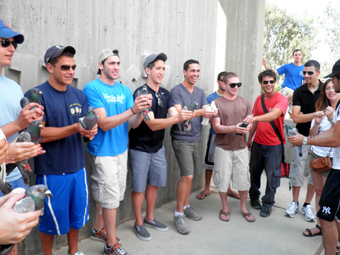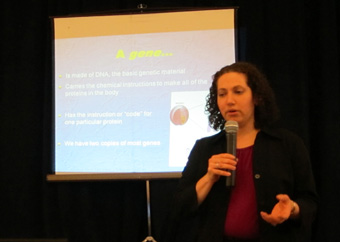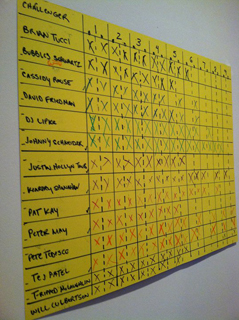Israel's 2013 World Baseball Classic projected team
Permanent link
It is early, but I’m already excited about 2013 World Baseball Classic that will feature Israel. Baseball is rapidly growing in Israel. The now defunct Israeli Baseball League still carries momentum with all the books being written about the experience. Also, there is a growing percentage of Jewish MLBers making the 2013 WBC a realistic and natural time for Israel to have a team. The Great Rabbino decided to take a quick peek at who will be on the team and lineup for the 2013 Israeli WBC team and also, what a team would look like in a perfect world.
DREAM TEAM
1) 2B – Ian Kinsler (Rangers)
2) SS – Danny Valencia (Twins)
3) 3B – Kevin Youkilis (Red Sox)
4) LF – Ryan Braun (Brewers)
5) 1B – Ike Davis (Mets)
6) RF – Gabe Kapler (Free Agent)
7) CF – Sam Fuld (Rays)
8) C – Brad Ausmus (Recently Retired)
PITCHING ROTATON
P – Jason Marquis (Nationals)
P – Scott Feldman (Rangers)
P – Aaron Poreda (Padres Minors)
RP – John Grabow (Cubs)
RP – Scott Schoeneweis (Recently Retired)
RP – Eric Berger (Indians Minors)
RP – Michael Schwimer (Phillies Minors)
RP – Craig Breslow (As)
BENCH
Jason Kipnis – 2B (Indians Minors)
Josh Whitesell – 1B (Japan)
Ryan Kalish – OF (Red Sox Minors)
Ryan Sadowski – OF (Korea)
Adam Stern – OF (Brewers Minors)
Our Dream Team looks amazing and a team that could legitimately compete for the WBC title. But here are some things to consider.
1) Braun, Youkilis, and Kinsler will very likely be asked to play for the USA team, which they will accept. Youkilis might not make the cut for the USA team. If so, he would could consider playing for Israel. Breslow and Grabow will also potentially get calls from Team USA.
2) Some of these players will most likely not play for an all Jewish team. In that category, are Scott Feldman, Scott Schoeneweis, Sam Fuld, and Ike Davis. Davis and Fuld might consider it for the opportunity to play in the WBC.
3) There will more than likely be a few actual Israelis or Jews who have lived in Israel on the team. We will leave three bench spots open for them.
4) Some players might not want to play due to fear of injuries or their MLB team not allowing them to play.
REALISTIC TEAM (Projected Team)
1B – Shawn Green (Retired) – Green has already gone on record saying he would consider playing for Israel in the WBC. Green would be more of a symbolic player and it would make a great story for his second book.
2B – Jason Kipnis (Indians Minors) – Kipnis most likely is too young for a spot on the USA team. He grew up in a Jewish area. It will be a great way for him to make a name for himself.
SS – Jake Lemmerman (Dodgers Minors) – The highest 2010 Jewish draft pick is just in AA. By 2013, he will be peeking and will be a vital part of this team.
3B – Danny Valencia – Valencia will be heavily pursued by the Israel team. As one of the only major leaguers on this team, it would be a good opportunity for him to can some spotlight.
LF – Gabe Kapler – Kapler just loves playing baseball so it seems like a natural fit. By 2013, he will be out of baseball and this will give him one last shot to prove himself.
CF – Ben Guez (Tigers Minors) – Guez is a solid minor league prospect who will have a spot on the Israel team if he wants it.
RF – Josh Whitesell – The WBC will give him great exposure to get back to the majors.
C – Brad Ausmus – While he retired a year ago, something tells me Ausmus laces up the pads to play in the WBC.
P – Jason Marquis – Marquis is key if Israel wants to compete. I am sure Israel will ask him to play.
P – Aaron Poreda (Padres Minors) – Poreda grew up with a strong Jewish upbringing. I would say he is the 1st player to sign on.
P – Ryan Sadowski (Korea) – Like Whitesell, it gets him great exposure.
RP – Eric Berger (Indians Minors) - AAA prospect should see the Majors soon. He lands on the team.
RP – Michael Schwimer (Phillies Minors) – Should have some MLB experience by 2013, but not enough to make team USA.
RP – Craig Breslow – Breslow could get be asked to play for the USA. But if he doesn’t, Breslow will be approached by Israel and I believe he would welcome the opportunity.
RP – Jason Hirsch (Yankees Minors) – Helps solidify a solid rotation.
RP – Jason Knapp (Indians Minors) – While he does not have a ton of experience yet, he is a top prospect in the Indians organization.
RP – Lenny Linsky (Rays Draftee)
BENCH
Ryan Lavarnway – C (Phillies Minors)
Adam Stern – OF (Brewers Minors)
James Rapoport – OF (Cardinals Minors)
MANAGERS
Head Coach – Art Shamsky – Shamsky will probably be the skipper. He has coaching and playing experience.
Hitting Coach – Ron Blomberg – The first DH of all time knows a thing or two about the art of hitting. The New Yorker had a great experience with the International Baseball League.
Pitching Coach – Larry Rothschild – The current Yankees pitching coach will for sure be asked to coach, why would he say no?
Honorary Coach – Sandy Koufax – Koufax will need to be honored and involved in some way. Well…he better be!
Thanks for reading. Feel free to comment.
And Let Us Say...Amen.






.jpg)



.jpg)


.jpg)



